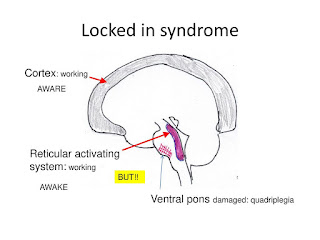AMPUTATION
DEFINITION
Amputation
is defined as the surgical removal of a part or whole limb disarticulation
means removal of limb through the joint
INDICATION
· Dead
· Dying
· Dangerous
· Dud
· Distressing
CONDITION
Traumatic
condition
· Road traffic accidents
· Occupational crush injuries
· Train traffic accident
Vascular
condition
· Arteriosclerosis
· Gangrene
· Thromboangitiisobliterans
Neoplastic
condition
· Malignant tumours of bone and soft
tissues
Infective
condition
· Leprosy
· Actinomycosis
· Filarial elephantiasis
· Gas gangrene
Congenital
Condition
· If the limb is grossly deformed
· Useless as in pseudoarthrosis tibia
CAUSES
Common causes of amputation in
different age group are as follows
· Children (congenital anomalies)
· Young adult(crush injuries)
· Elderly(vascular condition e.g
diabetes)
TYPE OF AMPUTATION
Guillotine
amputation
· This is an emergency amputation done
as a life saving measures
· This is done in cases of gross crush
injuries of the limb
· It is also indicated in case of gas
gangrene , when a rapid removal of the dangerously infected part is a life
saving procedure
Classical
amputation
· These are planned amputation where
regular skin flaps are raised and the wound is closed after ablation of the
limb
Revision
amputation
· Revision amputation are done
· As a second stage in guillotine
amputation
· In those with very unsatisfactory
stumps following a previous amputation
LEVEL OF AMPUTATION
UPPER LIMB
· Above elbow amputation
· Elbow disarticulation
· Below elbow amputation
· Wrist disarticulation
LOWER LIMB
· Hindquarter amputation
· Hip disarticulation
· Above knee amputation – ideal cut of
at least 12 cm above the joint line
· Knee joint disarticulation
· Below knee amputation
· Ankle & Foot amputation
§ Syme amputation
§ Hindfoot amputation
§ Lisfranc amputation
§ Chopart amputation
PRINCIPLE OF AMPUTATION
· Remove diseased are damaged part
· Bones: leaves enough for a good
prosthesis and rehabilitation
· Muscle: should be cut distal to the
bone so as to enable
Myplast- opposing two
groups of antagonizing muscles
Myodesis-
suturing of
Muscles to bone
· Nerves: should be cut short so that
they retract into the muscles tissue
· Blood vessels: Isolated & ligated
doubly
· Skin flaps : tension free flaps
Avoid anaesthetic skin on the
flaps
Delay primary closures if
Required
STUMP AND ITS MANAGEMENT
The stump is
the residual part of the limb left after the amputation and a surgeon’s work
does not finish with amputation
Good
stump should
· Neither be too long nor too short
· Have a good muscle power with full
movement in the proximal joint
· Have a healthy non adherent scar
· Splint to prevent a contracture
· Have a fleshy end with no bony spurs
· Stump bandaging with crepe bandage to improve its shape for limb fitting
· Stump exercises to improve its motor power and movement in the proximal joint
· Stump hygiene to maintain the skin
and scar in good condition
COMPLICATION
Immediate
· Infection
· Ischaemia
· Secondary haemorrhage
· Skin slouging
LATE
· Painful neuroma
· Phantom limb
· Contracture
· Oedema stump
· Shrinkage
· Osteomyelitis of bone
PROSTHETIC FITTING
Prosthesis
is a replacement or substitution missing or a diseased part.
Prosthetic instrument
that are used for the limbs
Uses of the prosthetic
limb are as follows
· Cosmetic –to provide an improved
appearance
· Functional –to provide function of
the missing part
.jpg)






Comments
Post a Comment